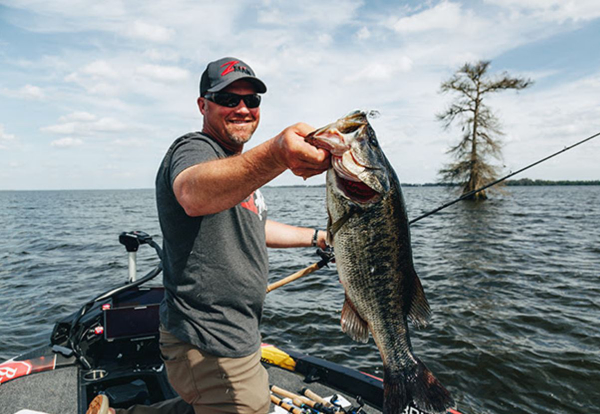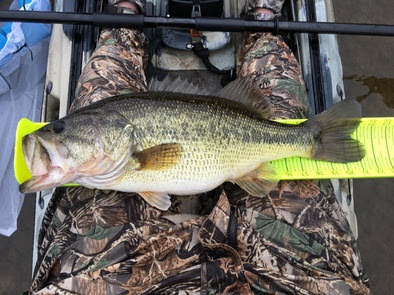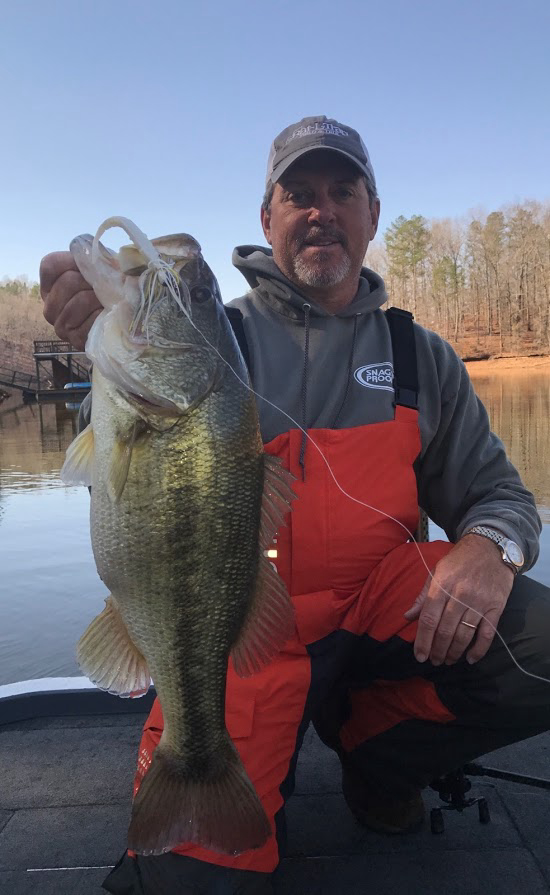Texas has been trying to raise world-record size largemouth bass for some 35 years with their Share-A-Lunker program. Anglers contribute their largest fish to a hatchery where they are crossed repeatedly with the offspring of other giant fish to hopefully produce ever larger bass.

Florida's fertile waters and long growing seasons are noted for producing big fish, though 10 pounders are still hard to come by. (Z-Man Lures)
The massive effort has not worked as well as might be hoped, though some of their lakes like 23-year-old Ivie are producing fish in the ‘teens with some consistency.
So, we have to view with a bit of skepticism the claim from a Georgia fish hatchery which has announced discovery of multiple, naturally occurring genetic indicators that predict the growth of Florida-strain largemouth bass to trophy size.

Bass grow about a pound per year in most waters, but where food is extremely easy to come by, they can average close to two pounds a year.(Hobie Kayaks)
The company says this is the fast track to growing XXL largemouths in private as well as public waters. While it makes sense to take advantage of modern genetic tracking science to try to select the fastest growing bass possible, buying these “super bass” won’t be an automatic route to trophy fish in your home pond.
The only proven case of genetically selected transplanted bass growing to world record size has been in California, where Florida strain fish were transplanted into deep, cool lakes that are also regularly stocked with rainbow trout that are just about shiner size and have no awareness of predators. The bass ate themselves into rotund green footballs over a decade, and several over 20 pounds have been certified.
Pond managers know that in confined private waters—and a 100-acre home pond would be a jumbo—that the key to bass growth is not genetics, it’s food availability. These little waters rarely can support spawning shad populations, so the bass have to eat bluegills. They do fine the first few years when there are lots of small bluegills. In fact, the population of big bass seems to explode. It happens on large lakes just impounded, as well—the “new reservoir” phenomena.

Jumbo bass like this one are hard to find no matter where you fish, but reaching such size requires lots of food as well as longevity and the right genes. (Capt. Mike Carter)
But when the ‘gills get to choker size, they are no longer bass fodder. On big lakes the bass can switch to shad and remain healthy if not supercharged. On small ponds where there are no shad, they begin to starve. The common largemouth from a starved pond has a big head and a caved-in belly. No matter what the genetics, if the bass does not get all it needs to eat, it won’t grow to trophy size.
Bottom line is that pond owners are probably better off buying a load of shad every few months to release into these ponds. . . and in some cases with larger ponds, the right chemistry and stocking at just the right time, pond managers say it’s possible to get resident shad populations started.
But for the most part, the only way to grow big bass is pretty much the same way you grow any livestock, hogs or cattle or whatever—you have to feed them all they want.
Stocking enough genetically refined fish in larger public lakes is also not a sure path to success, though Texas has had some success with their enormous program. Smaller stocking operations like those done sporadically on Lake Guntersville have shown little or no success. The issue is that there are so many local-strain bass in these lakes that their offspring quickly overwhelm the thin line of Florida fish released into a few bays. (A lot of these fingerling size fish also wind up in the stomachs of crappies and other bass, another issue.)
Bottom line is there’s no easy or cheap way to grow trophy sized bass in your home pond.
Find more information at titanbass.com.